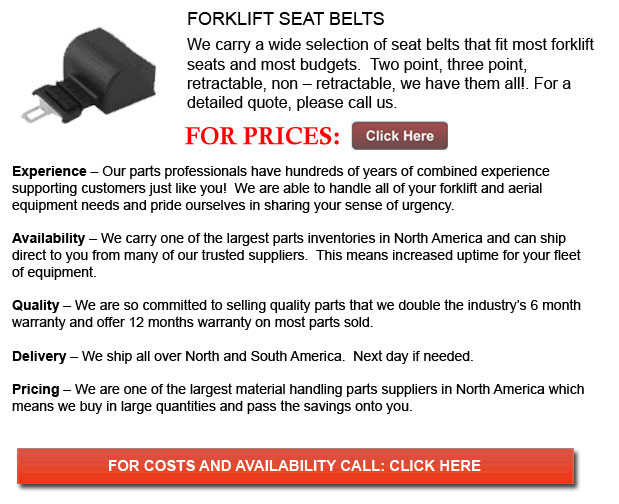
Explained in the Regulation guidelines are the application of operative restraints and seatbelts on lift trucks. It states that the accountability falls on the employers' to be able to make certain that each and every machinery, piece of equipment and tool is used correctly utilized in accordance to the directions of the maker.
Rough Terrain lift trucks have to meet the guidelines of ANSI Standard ASME B56.6-1992 regarding their use, design, maintenance, inspection and fabrication.
Mobile equipment like side boom tractors with a Rollover Protective Structure (ROPS), ought to include seat belts which meet the Society of Automotive Engineers safety requirements; Society of Automotive Engineers Standard J386 JUN93, Operator Restraint System for Off-Road Work Machines. If whatever mobile machinery includes seat belts required by law, the driver and subsequent passengers have to make sure they make use of the belts every time the vehicle is in motion or engaged in operation as this can cause the machinery to become unsteady and thus, unsafe.
If a seat belt or other operator restraint is needed on a lift truck.
While working a forklift, the seat belt requirements will depend on a number of factors. Contributing factors to this determination might include whether the the forklift is equipped together with a Rollover Protective Structure, the kind of forklift itself and the year the lift truck was made. The manufacturer's directions and the requirements of the applicable standard are referenced in the Regulation.
With regards to powered industrial trucks, ANSI Standard ASME B56.1-1993 refers to an operator restraint device, enclosure or system. An operator restraint device, system, or enclosure is intended to assist the operator in reducing the possibility of entrapment of the head and/or torso between the truck and the ground in the event of a tip over. The system or restraint device can consist of a seat belt, although a seat belt is not essentially a part of such equipment or system.
![]() Click to Download the pdf
Click to Download the pdf
Forklift Parts








Lift Parts Express Modesto
TOLL FREE: 1-888-695-7994
LOCAL: 209-343-9537
3430 Tully Road
Modesto, California
modestoforkliftparts.com
Email Us
About Us



